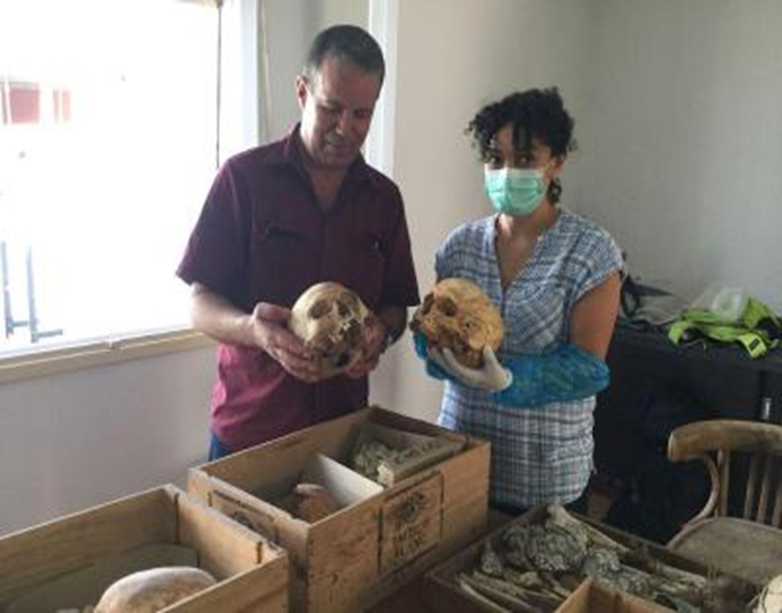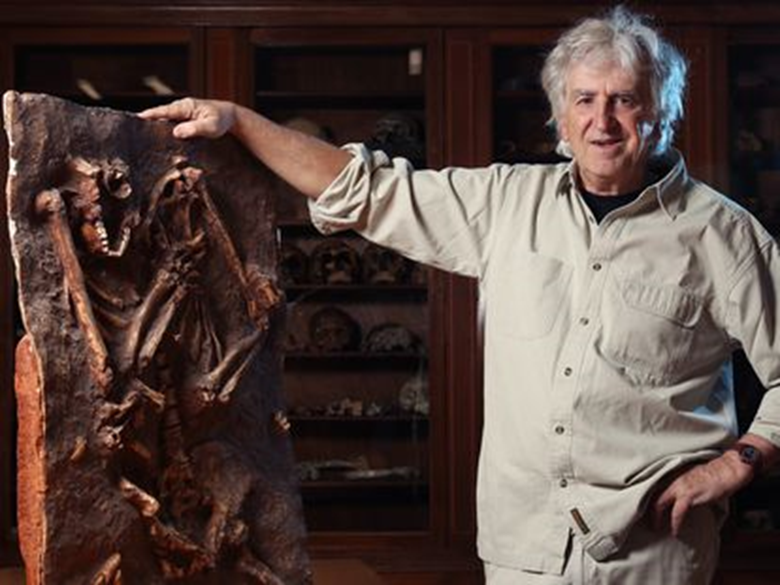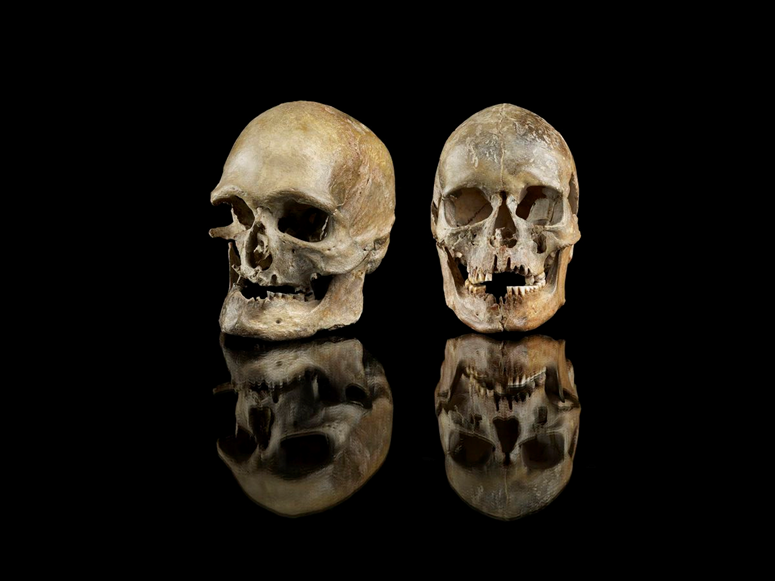Nine bodies of Iberian migrants who brought agriculture to Africa 7,400 years ago have been discovered

DNA analysis revealed a migration across the Strait of Gibraltar a thousand years earlier than previously thought.
Some specialists believe that what happened in Europe about 7,400 years ago was a confrontation with an alien civilization. Europeans were groups of hunters and nomads who, for thousands of centuries, were the only known way of living on this vast, almost uninhabited continent. Until the region received migrants from Anatolia, i.e. from present-day Turkey, bringing with them agriculture and livestock and from it a settled lifestyle, their progress towards the northern Mediterranean was very rapid - it lasted hardly a century - and it is believed that they traveled in small boats along the coast, and were characterized by During this period of conflicts and coexistence, migrant farmers mixed with the local population until they were assimilated and contained. Although some clans remained isolated hunter-gatherers for more than 1,000 years, it was these shifts that bore the seeds of the Neolithic revolution that laid the foundations of civilization.
The central question during this period remains; How did this revolution reach Africa? Among the most prominent hypotheses and elements of the answer, we find that agriculture appeared spontaneously in this geographical area, through the discovery of agriculture, and there is another theory that says that agriculture appeared about 5000 years ago, at the hands of shepherds and farmers from the Near East.
While a team led by scientists from the University of Burgos and Uppsala (Sweden) is now showing that the Neolithic arrived in Africa at the same time period as it arrived in Europe, that is, about 7,400 years ago, and the conclusions of these scientists' research were published in the journal Nature, where they based their research on The results of the analysis of teeth and bones discovered in four sites in Morocco, by comparing them with other sites in Europe.
The key is located in the cave under the cave, which is located at the foot of Buziton, 10 kilometers southeast of the city of Tetouan, Morocco, where human remains, seeds, and pottery pieces decorated with mollusk shells were practically identical to those found on the Iberian Peninsula.
"It was like finding a Baroque cathedral in the midst of Aztec Mexico," University of Cordoba archaeologist and study co-author Rafael Martinez Sanchez explains.
?A round trip or a return trip
The Catalan archaeologist Miquel Tarradell was the first to conduct excavations at this site belonging to Morocco, which was still under Spanish protection, during the years of the 1950s, and he believed that the decorated pottery found in the Iberian Peninsula was brought by immigrants from North Africa who crossed the strait, As Martinez explains, but upon seeing the same ceramics at the archaeological site, Tarradell changed his mind and assumed that it was the other way around: that the Iberians brought it to Africa, but he died in 1995 without being able to prove it.
DNA analysis conducted on four individuals from this site revealed the problem, as the genetic profiles of these farmers were 75% similar to those of the Iberian Peninsula, and about another third from North Africa. The DNA of European hunter-gatherers who coexisted with farmers in an earlier historical period.
It concludes from the work that a group of farmers from the Iberian Peninsula arrived in North Africa, intermarried with the local population and settled, and brought farming techniques to the continent for the first time, about 1000 years earlier than previously thought, and Martinez is likely to have crossed the strait through wooden boats without sails, using only oars, remains a hypothesis unless they find any remains of these boats.
“It is something unprecedented. The hunter-gatherers of Europe could never have invented the Neolithic way of life on their own, it has always been by assimilating and merging with other groups.”

Christina Baldiocera, Borkus University:
The mysterious thing is that in Ifri N'amr Musa, about 300 kilometers to the south, there is another site that dates the same event at least a century after the first one, where remains of seeds, pottery and livestock were found, but The analyzes proved that its inhabitants are 100% indigenous, their DNA is indistinguishable from the DNA of the nomadic hunter-gatherers who inhabited this region approximately 15,000 years ago, in addition to their tradition of pulling out the incisors of the upper jaw to distinguish themselves, as Louise Humphrey and Abdel-Galil show Bouzokar in the complementary article.
The local population managed to create a stable lifestyle after several centuries, although they did not mix with immigrants from Europe, as if there was a border separating them, similar to the borders that exist in parts of Europe between farmers and the last fishermen.
“It is something unprecedented,” says Cristina Valdiocera, a biologist at the University of Burgos and co-author of this exploration. And by noting that “in Europe, hunter-gatherers could never create a stable Neolithic lifestyle on their own, it was always through assimilation and merging with other groups.”
on the brink of collapse
In 2018, Valdiocera led a similar study in the Iberian Peninsula, and the study showed that the remains of farmers were found in some locations, very similar to the remains found now in Morocco, and the geneticist estimates that the first groups of migrants who crossed the strait numbered dozens of individuals and that they must have There are several waves of migration along the same path.
The population of North Africa was on the verge of extinction before the arrival of the first farmers, if the population collapsed during the last ice age in Europe, and hardly 5,000 people remained, leaving only 1,400 people in North Africa, and Valdiocera believes that the arrival of immigrants was a salvation for them from extinction, and increased them from Genetic diversity and saved them from inbreeding mutations.
This study confirmed that about 1000 years after the first wave of migration during the Neolithic period, a second wave arrived from the Near East, who came through the southern coast of the Mediterranean Sea until they reached Morocco, the DNA results of three people who lived 6400 years ago in Skhirat show Rosé, on the country's west coast, shows the genetic features of this new wave of immigrants, as the same traits are found in present-day populations in Morocco, as well as in the Canary Islands, whose population originates from immigrants from North Africa.
complete admixture:
The site of the Cave of Gunpowder is the most recently analyzed site, and it is located about 50 km south of the previous site, and DNA analyzes have proven that its inhabitants did indeed belong to the first Iberian farmers, and the same analyzes proved that they belonged to the indigenous people of North Africa and pastoral immigrants from the Middle East, which It is a perfect mixture of indigenous people and immigrants.
An expert in anthropology at the University of Vienna, Ron Penhaci, calls this study “exciting and important,” as there has been a lot of controversy about whether the Neolithic period arose spontaneously and developed in the region, or whether it came from Europe or the Middle East by immigrants, and interesting Surprisingly, all the hypotheses are fulfilled, although not at the same time, the Iberian farmers were the first to start this period, and the most interesting thing here is that they mixed with the local population, while some of the local population did not mix with them, and they remained preserving their original gardens, This is what the study has proven.

Geneticist Carlos Laluisa Fox, affiliated with the Supreme Council for Scientific Research, believes that “with this research, there is no longer the hypothesis of transmitting the Neolithic culture without the human element,” although that was the prevailing thinking a few decades ago, and he adds in his explanation of this phrase; I think it is clear that agriculture is not something that can be simply explained or copied, like other trade and activities, it requires people who practice it and are familiar with it, that is, there is the possibility of taking it by immigrants at least at the first moment and continuing with it.
Source : websites

